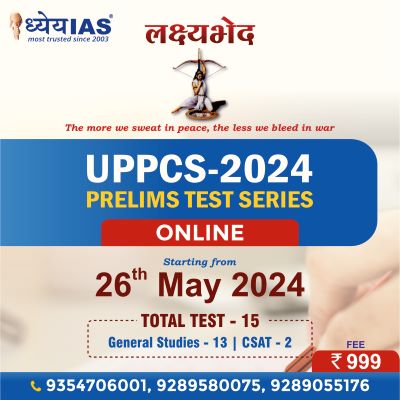Relevance: GS-3- Indian Economy and issues relating to planning, mobilization of resources, growth, development and employment; Major crops cropping patterns in various parts of the country; Biodiversity and Environment conservation
Key phrases: NITI Aayog, National Interlinking of Rivers Authority (NIRA), Jal Shakti Ministry, National river linking project (NRLP), Ken-Betwa(KB), Special Purpose Vehicle, har khet ko paani, 3R.
Why in News?
- Recently at an event, NITI Aayog member Ramesh Chand announced the government's plan to abolish the “Central Water Development Agency'' and set up ‘National Interlinking of River Authority’ (NIRA).
- A bill for the same will come up before the cabinet soon.
Key Recommendations:
- It will be headed by Jal Shakti Minister
- It will act as an independent autonomous body for planning, investigation, financing and the implementation of the river interlinking projects in the country.
- NIRA is empowered to raise funds and act as a repository of borrowed funds.
- It will also have a mandate to coordinate with neighboring countries
- It will also have the power to set up a Special Purpose Vehicle (SPV) for individual link projects.
Historical track of interlinking of rivers in India:
- With the directives of honorable SC, the idea was first orchestrated by previous government in 2002 but could not achieve much on ground due to lack of consensus between the states on dams and canals.
- The cabinet in December last year had approved central funding of ₹39,317 crores for the Ken-Betwa rivers linking project in Bundelkhand (Uttar Pradesh and Madhya Pradesh), which is scheduled to be completed by 2030.
- The project will provide an annual irrigation of 10.62 lakh hectares, drinking water supply to a population of about 62 lakhs and also generate 103 MW of hydropower and 27 MW solar power.
Interlinking of River:
- Transferring surplus water from one river basin to other water deficient river basin is called interlinking of rivers
- For example, Indo-gangetic rivers are perennial and suffer from flood, whereas peninsular rivers are seasonal and face frequent drought. Hence if this excess water from Plain is transferred to plateau then the problem of flood and draught can be resolved .
- Examples - Ken Betwa river Linking project got cabinet approval in 2014.
- Some other projects under proposed inter-basin water transfer links:
- National river Linking project -
- Envisage to link 37 rivers by making 3,000 Storage Dams
- Two components -
- Himalayan component
- Peninsular river components
- Himalayan component -
- Construction of storage dam on Ganga, Brahmaputra and tributaries.
- Two purposes -
- Solve the problem of flood in northern plain `
- Drought in Haryana, Rajasthan, Gujarat
- Two components -
- Connecting Ganga and Brahmaputra basin with Mahanadi
- Eastern tributaries of Ganga with Sabarmati and Chambal
- Peninsular component -
- Linking 16 rivers of south India
- Surplus of Godavari and Mahanadi to Krishna, Cauvery, Pennar and Vagai rivers
- Ken Betwa river linking project is a sub component of this
Significance:
- Increase water availability significantly, helping the government to fulfill its slogan of “har khet ko paani” (water for every field).
- The project has potential of generating 3.4 GW of hydropower is executed in full.
- It will reduce the monsoon failure related vagaries to Indian farmers, in this era of Climate change.
- It will have significant commercial and economic benefits from Inland waterways, village tourism and fisheries etc.
- Additional waterline defense would augment the security and integrity of India.
Challenges:
- Problem of sustainability - Around ₹17,000 crores was spent annually during the period 1993-2014 on medium and minor irrigation projects, but the canals were either reduced or were stagnant during this period
- Ecological Problems: Conditions for forest clearance, wildlife clearances (Central environment committee of supreme court of India) and environment clearances (NGT) are difficult to meet and this delay the projects. For example, the Ken-Betwa interlinking project is yet to get final forest clearance.
- Social hurdles - Building dams and reservoirs will cause the displacement of a lot of people. This will cause a lot of agony for a lot of people. They will have to be rehabilitated and adequately compensated.
- International disputes: In the Himalayan component of the project, the effect of building dams and interlinking rivers will have an effect on the neighboring countries. This will have to be factored in while implementing the project. Bangladesh has opposed the transfer of water from the Brahmaputra to the Ganga.
Solution:
- Modern Technologies: Adoption of modern technologies for agricultural purposes. He also suggested creating awareness about water conservation among students.
- Hydrological Assessment: A thorough hydrological assessment of any river basin. For example, in the case of Godavari-Krishna-Pennar-Cauvery link proposal, none of the donor states agree that Godavari has transferable surplus
- Comprehensive Assessment: A comprehensive assessment of all available options in the concerned basins, including rainwater harvesting, groundwater recharge, watershed development, treatment and recycling of sewage and other polluted sources, optimum use of existing water infrastructure, proper cropping pattern, desilting of local and other storages etc. is necessary before starting the project.
- Decentralized Water Management: Focus on decentralization water management techniques, 3R (Reduce, Reuse and Recycle), Traditional water bodies rejuvenation etc.
- Harmonization: Harmony between National waterway project and River interlinking project to minimize tussle between various bodies.
Conclusion:
- Environmental, social and even political ramifications of the same should be studied in detail and then a sustainable, mutually agreed solution should be reached at to solve the India’s water crisis as pointed out by Composite water management Index of NITI Aayog.
Sources: The Hindu BL The-Out-Reach
Mains Question:
Q. Though National Interlinking of Rivers Authority (NIRA) for interlinking of rivers is a step in the right direction, the water crisis in India needs a perennial solution. Explain. (10 Marks).

-for-interlinking-of-rivers.jpg)

















